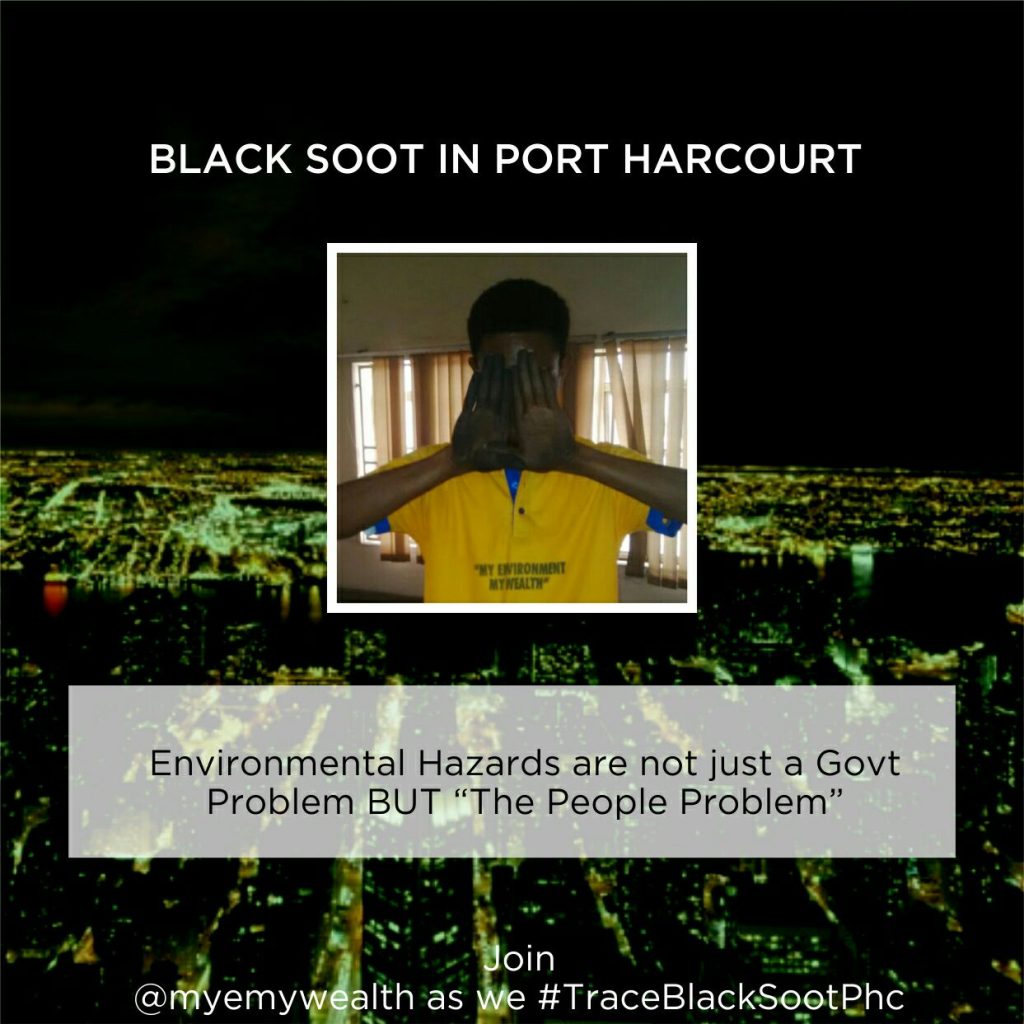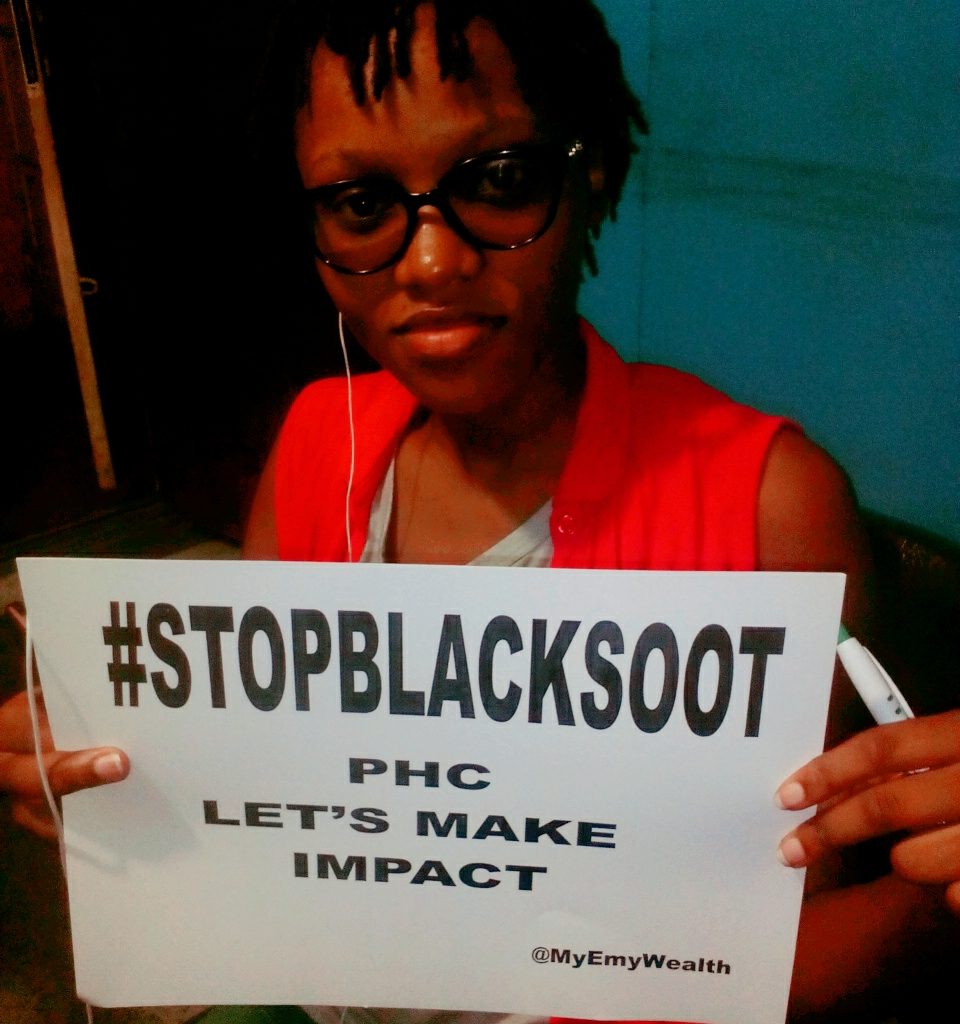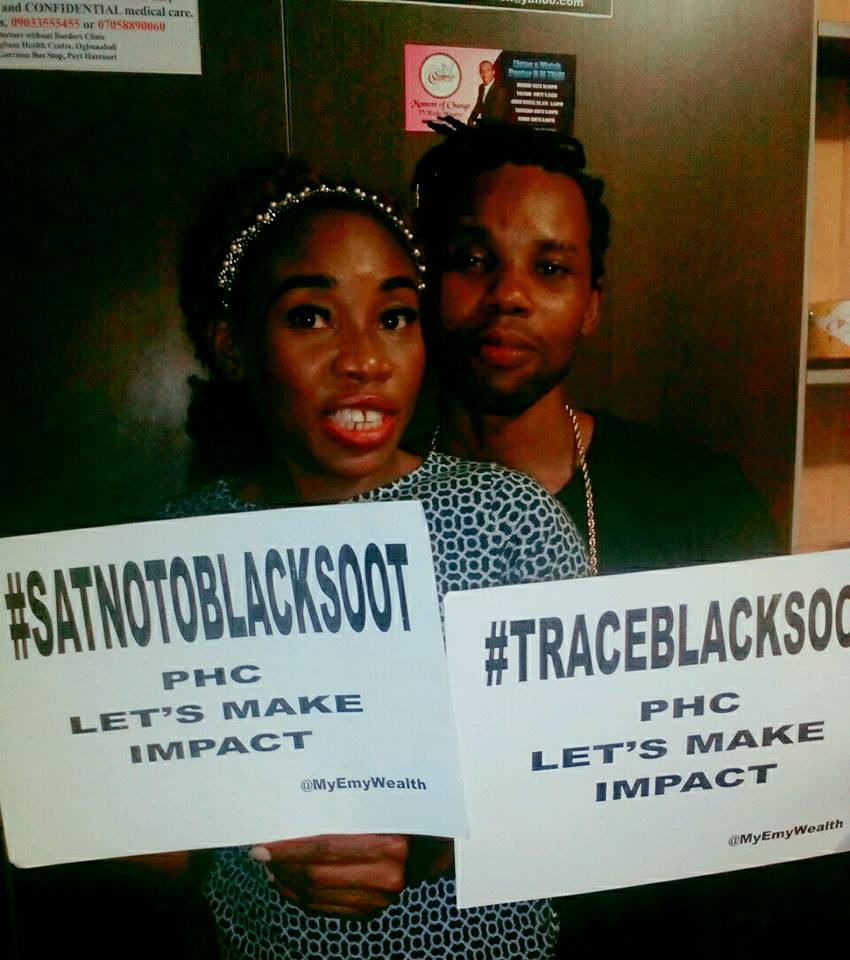
For the past few months, Rivers State has been experiencing Black soot – an environmental and health hazard. In this interview with Alli Abiola, Port Harcourt based Environmental advocate and CEO of Bliss Octanoprise International, BOI, Wonne Afonelly, weighs in on the deadly menace and advise for the Government and the citizens. Excerpts.
Soot, as we know is a major Environmental Hazard in the Society. Do you think Charcoal usage in the society adds to the hazards Port Harcourt is currently facing?
First of all, I’d love to use this medium to correct something I heard severally on some media stations in Port Harcourt, OAPs trying to correct participants who express their views on black soot, saying ” there’s no such thing as black soot, soot is black”. I think ‘being a professional OAP doesn’t make one an Environmental Professional’. NOT ALL SOOT ARE BLACK.
Soot is a term that describes particulate matter 2.5picometer:
1. Red soot is observed in exhaust tips of vehicles that use octane boosters which contain manganese or iron compounds
2. Brown soot is from burning of organic matter or particular wood species like the Pine or Beech wood. Brown soot during winter causes serious environmental hazards around the Indian ocean and South Asia
3. Black soot is caused by incomplete combustion of hydrocarbons especially black carbon compounds. The soot prevalent in Port Harcourt is the “black soot“.

To the question – I think charcoal usage contributes some soot but the quantity is almost negligible in Port Harcourt since Charcoal usage is more in the rural communities, but they have experienced little or no black soot since the past one month I’ve lived in one of the rural communities.
Few days ago, the newly inaugurated Environmental Task Force Shutdown a suspected company, is the Government on track?
They have since the task force was set up shut down 3 companies. I could say the government is on track to have plunged into action at all, the fears are that the root causes of the black soot may not be traced if actions are taken in a hurry. One wonders what methods were utilized by government before concluding and shutting down these companies. What regulatory limits are set according to Environmental Impact Assessment (e.g. EPA proposes to change set tolerance limit by Clean Air Act at 15 micrograms per cubic meter of air to 12 & 13micrograms by year 2020); what are the limits of soot dischargeable into the environment, how far were these limits exceeded?
If these facts are known then it makes it better to checkmate other companies in the future.
What do you advise to be done by the people or organization while the Government still uncovers solution to the Hazard?
Like I’d always reiterate that “Environmental Hazards are not just a Government problem but The People problem”; I’d advise everyone to support Government in every ways possible. Look out for different types and colours of smoke and report to appropriate quarters.
Here’s a guide:
- On cold days the smoke is white; due to moisture content and therefore looks like steam but in hotter climates, the smoke is black showing the carbon and ash clearly,
- Light grey smoke is observed in fire from things that easily burn like paper, cardboard;
- Brown smoke is observed in fire from Wood, a sign that it’s starting to burn,
- Darker Grey smoke shows content is seriously burning,
- Black smoke is observed in noxious items when burnt like plastics, synthetics, paints, fuel oils etc.
- These differences in colours of smoke is caused by a combination of what is burned and how completely it is being burnt,
- Completeness of Combustion is controlled primarily by Oxygen supply.
QUESTION
What kind/colour of soot do you get when burning grass or wood: white, brown, grey or black?
Clue: Not Every Soot Is Black!
In what way do you think the government can solve Environmental Hazards?
The Government of Rivers state and any other state can tackle Environmental hazards by – First setting tolerance limits according to UNEP and WHO standards, if possible edicts that suit the state based on level of industrialization, secondly – setting up a 24hour active Regulatory and Monitoring team, (not task force only when a hazard is posing serious threats), thirdly -implementing these laws by ensuring defaulters ( irrespective of political affiliations) pay full penalties all the time, even before shutting down, fourthly – sensitize it’s citizens regularly about environmental laws, collaborate with other stakeholders and teach them their roles especially during a hazard as the black soot.
What do you think are the causes of Environmental Hazards?
Some causes of Environmental hazards are (but not limited to) – degraded biodiversity, deforestation, overpopulation, improper waste disposal, amongst others etc.
As an environmental advocate, to what extent will the ‘Soot’ have on the health and well-being of the citizens in the society?
To a large extent, (the black soot if all sources are not traced and stopped); the damage to the well-being and health of Port Harcourt residents and neighbouring states would be irreparable as it would not only affect those who experience it now but may also affect unborn generations especially with soots that contain PAH (polycyclic aromatic hydrocarbons) which are highly carcinogenic.
Research in America as at 2013 showed that many premature deaths are directly related to soot in the environment – about 20,000 premature deaths annually. More so, a 2012 study has also shown that fine particles 2.5PM are linked to more low weight babies in 22 developing countries including China, India, Nigeria, Nepal and Peru.
What are your advices to the Government on Waste eradication in the community?
The best solution to waste eradication in any system is to make everyone responsible and pay for waste generated, that way, most persons would be careful about how much waste they generate daily. They would get to understand the 4Rs of Waste Management, (and they include): Reuse, Reduce, Recycle and Recover energy. Every state should have at least 2 recycling plants and set up waste management agencies in each Local Government Area.
BOI has over the last two years advocated clean and secured environment. What are the challenges of BOI as an Environmental advocate?
A major challenge of BOI in Environmental advocacy is the unfriendly approach/response of major stakeholders of the environment to support and partner with the program if possible. We have had bank managers tell us that the areas we want to clean up were not defaced by them. We have also had Broadcast Media stations tell us bluntly, “nobody cares about what happens in or to the environment, we can’t give you airtime, nobody would listen, would be a waste”.
What else has BOI been up to recently?
BOI through its Environment Advocacy Project is now partnering with Educational Institutions (Primary and Secondary schools) in raising volunteers and advocates for the environment. We have also taken the campaign to Grassroots communities; certain projects in the pipeline would be unveiled before the end of the first half of 2017. Thank you!

Session with Alli Sheriffdeen Abiola — itsallisay@gmail.com

